
Each of the brain’s 100 billion neurons has somewhere in the realm of 7,000 connections to other neurons, creating a tangled roadmap of about 700 trillion possible turns. But thinking of the brain as roads makes it sound very fixed—you know, pavement, and rebar, and steel girders and all. But the opposite is true: at work in our brains are never-sleeping teams of Fraggles and Doozers who rip apart the roads, build new ones, and are constantly at work retooling the brain’s intersections. This study of Fraggles and Doozers is the booming field of neuroplasticity: how the basic architecture of the brain changes over time. Scientist, neuro math geek, Science Channel personality and accomplished author Garth Sundem writes for ScriptPhD.com about the phenomenon of brain training and memory.
Certainly the brain is plastic—the gray matter you wake up with is not the stuff you take to sleep at night. But what changes the brain? How do the Fraggles know what to rip apart and how do the Doozers know what to build? Part of the answer lies in a simple idea: neurons that fire together, wire together. This is an integral part of the process we call learning. When you have a thought or perform a task, a car leaves point A in your brain and travels to point B. The first time you do something, the route from point A to B might be circuitous and the car might take wrong turns, but the more the car travels this same route, the more efficient the pathway becomes. Your brain learns to more efficiently pass this information through its neural net.
A simple example of this “firing together is wiring together” is seen in the infant hippocampus. The hippocampus packages memories for storage deeper in the brain: an experience goes in and a bundle comes out. I think of it like the pegboard at the Seattle Science Center: you drop a bouncy ball in the top and it ricochets down through the matrix of pegs until exiting a slot at the bottom. In the hippocampus, it’s a defined path: you drop an experience in slot number 5,678,284 and
it comes out exit number 1,274,986. How does the hippocampus possibly know which entrance leads to which exit? It wires itself by trial and error (oversimplification alert…but you get the point). Infants constantly fire test balls through the matrix and ones that reach a worthwhile endpoint reinforce worthwhile pathways. These neurons fire together, wire together, and eventually the hippocampus becomes efficient. It’s just that easy. (And because it’s so easy, researchers aren’t far away from creating an artificial hippocampus.)

Now let’s think about Sudoku. The first time you discover which missing numbers go in which empty boxes, you do so inefficiently. But over time, you get better at it. You learn tricks. You start to see patterns. You develop a workflow. And practice creates efficiency in your brain as neurons create the connections necessary for the quick processing of Sudoku. This is true of any puzzle: your plastic brain changes its basic architecture to allow you to complete subsequent puzzles more efficiently. Okay, that’s great and all, but studies are finding that the vast majority of brain-training attempts don’t generalize to overall intelligence. In other words, by doing Sudoku, you only get better at Sudoku. This might gain you street cred in certain circles, but it doesn’t necessarily make you smarter. Unfortunately, the same is true of puzzle regiments: you get better at the puzzles, but you don’t necessarily get smarter in a general way.
That said, one type of puzzle offers some hope: the crossword. In fact, researchers at Wake Forest University suggest that crossword puzzles strengthen the brain (even in later years) the same way that lifting weights can increase muscle strength. Still, it remains true that doing the crossword only reinforces the mechanism needed to do the crossword. But the crossword uses a very specific mechanism: it forces you to pull a range of facts from deep within your brain into your working memory. This is a nice thing to get better at. Think about it: there are few tasks that don’t require some sort of recall, be it of facts or experiences. And so training a nimble working memory through crosswords seems a more promising regiment than other single type of brain training exercise.
This is borne out by research. A Columbia University study published in 2008 found that training working memory increased overall fluid intelligence. So the answer to this article’s title question is yes, brain training is very real. (Only, there’s lot of schlock out there.) But hidden in this article lies the new key that many researchers hope will point the way to brain training of the future. Any ONE brain training regiment only makes you better at the one thing being trained. But NEW EXPERIENCES in general, promise a varied and continual rewiring of the brain for a fluid and ever-changing development of intelligence. In other words, if you stay in your comfort zone, the comfort zone decays around you. In order to build intelligence or even to keep what you have, you need to be building new rooms, outside your comfort zone. If you consume a new media source in the morning, experiment with a new route to work, eat a new food for lunch, talk to a new person, or…try a NEW puzzle, you’re forcing your brain to rewire itself to be able to deal with these new experiences—you’re growing new neurons and forcing your old ones to scramble to create new connections.
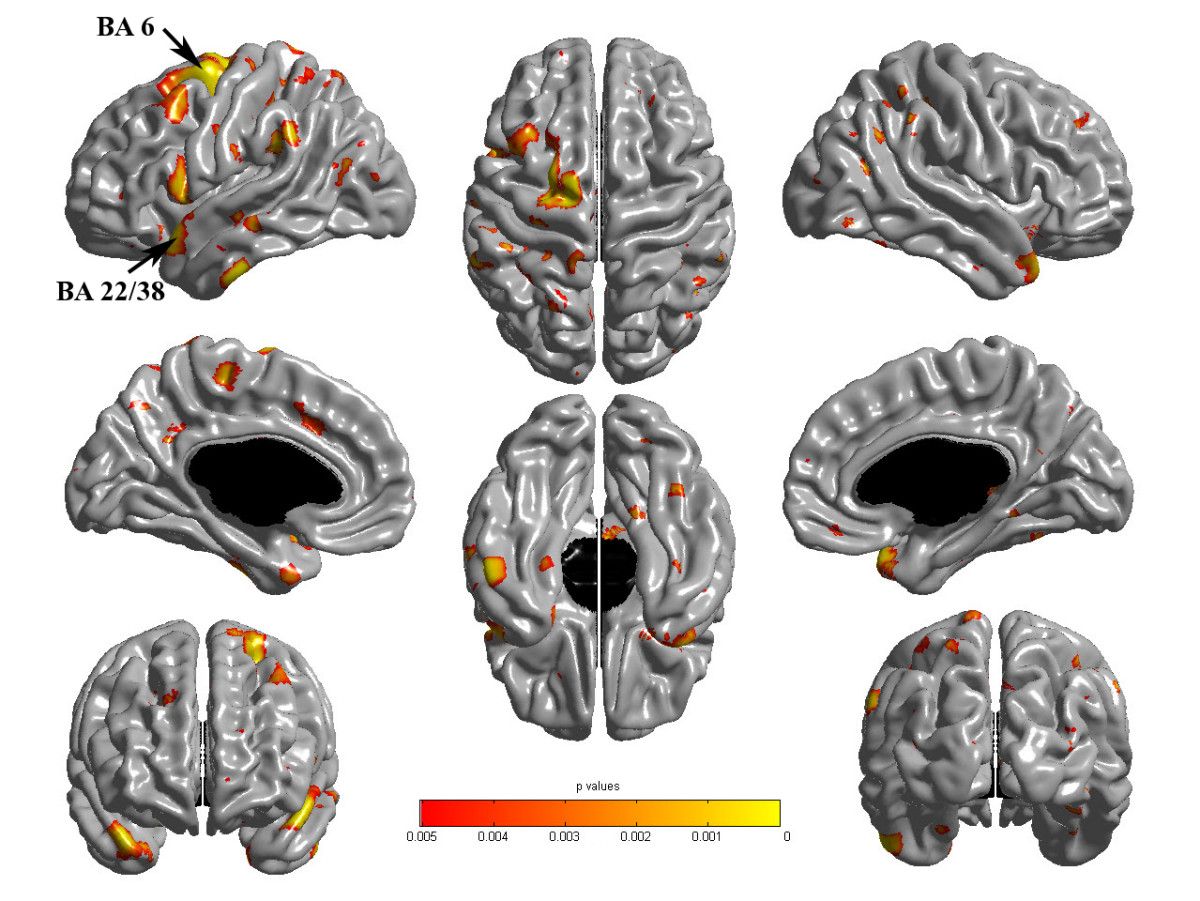
Here’s what that means for your brain-training regimen: doing a puzzle is little more than busywork; it’s the act of figuring out how to do it that makes you smarter. Sit down and read the directions. If you understand them immediately and know how you should go about solving a puzzle, put it down and look for something else…something new. It’s not just use it or lose it. It’s use it in a novel way or lose it. Try it. Your brain will thank you for it.
Garth Sundem works at the intersection of math, science, and humor with a growing list of bestselling books including the recently released Brain Candy: Science, Puzzles, Paradoxes, Logic and Illogic to Nourish Your Neurons, which he packed with tasty tidbits of fun, new experiences in hopes of making readers just a little bit smarter without boring them
into stupidity. He is a frequent on-screen contributor to The Science Channel and has written for magazines including Wired, Seed, Sand Esquire. You can visit him online or follow his Twitter feed.
*****************
ScriptPhD.com covers science and technology in entertainment, media and advertising. Hire our consulting company for creative content development.
Subscribe to free email notifications of new posts on our home page.
]]>
Scientists are becoming more interested in trying to pinpoint precisely what’s going on inside our brains while we’re engaged in creative thinking. Which brain chemicals play a role? Which areas of the brain are firing? Is the magic of creativity linked to one specific brain structure? The answers are not entirely clear. But thanks to brain scan technology, some interesting discoveries are emerging. ScriptPhD.com was founded and focused on the creative applications of science and technology in entertainment, media and advertising, fields traditionally defined by “right brain” propensity. It stands to reason, then, that we would be fascinated by the very technology and science that as attempting to deduce and quantify what, exactly, makes for creativity. To help us in this endeavor, we are pleased to welcome computer scientist and writer Ravi Singh’s guest post to ScriptPhD.com. For his complete article, please click “continue reading.”
Before you can measure something, you must be able to clearly define what it is. It’s not easy to find consensus among scientists on the definition of creativity. But then, it’s not easy to find consensus among artists, either, about what’s creative and what’s not. Psychologists have traditionally defined creativity as “the ability to combine novelty and usefulness in a particular social context.” But newer models argue that these type of definitions, which rely on extremely-subjective criteria like ‘novelty’ and ‘usefulness,’ are too vague. John Kounios, a psychologist at Drexel University who studies the neural basis of insight, defines creativity as “the ability to restructure one’s understanding of a situation in a non-obvious way.” His research shows that creativity is not a singular concept. Rather, it’s a collection of different processes that emerge from different areas of the brain.
In attempting to measure creativity, scientists have had a tendency to correlate creativity with intelligence—or at least link creativity to intelligence—probably because we believe that we have a handle on intelligence. We believe can measure it with some degree of accuracy and reliability. But not creativity. No consensus measure for creativity exists. Creativity is too complex to be measured through tidy, discrete questions. There is no standardized test. There is yet to be a meaningful “Creativity Quotient.” In fact, creativity defies standardization. In the creative realm, one could argue, there’s no place for “standards.” After all, doesn’t the very notion of standardization contradict what creativity is all about?
To test creativity, researchers have historically attempted to test divergent thinking, an assessment construct originally developed in the 1950s by psychologist J. P. Guilford, who believed that standardized IQ tests favored convergent thinkers (who stay focused on solving a core problem), rather than divergent thinkers (who go ‘off on tangents’). Guilford believed that scores on IQ tests should not be taken as a unidimensional measure of intelligence. He observed that creative people often score lower on standard IQ tests because their approach to solving the problems generates a larger number of possible solutions, some of which are thoroughly original. The test’s designers would have never thought of those possibilities. Testing divergent thinking, he believed, allowed for greater appreciation of the diversity of human thinking and abilities. A test of divergent thinking might ask the subject to come up with new and useful functions for a familiar object, such as a brick or a pencil. Or the subject might be asked to draw the taste of chocolate. You can see how it would be very difficult, if not impossible to standardize a “correct” answer.
Eastern traditions have their own ideas about creativity and where it comes from. In Japan, where students and factory workers are stereotyped as being too methodical, researchers are studying schoolchildren for a possible correlation between playfulness and creativity. Nath philosopher Mahendranath wrote that man’s “memory became buried under the artificial superstructure of civilization and its artificial concepts,” his way of saying that that too much convergent thinking can inhibit creativity. Sanskrit authors described the spontaneous and divergent mental experience of sahaja meditation, where new insights occur after allowing the mind to rest and return to the natural, unconditioned state. But while modern scientific research on meditation is good at measuring physiological and behavioral changes, the “creative” part is much more elusive.
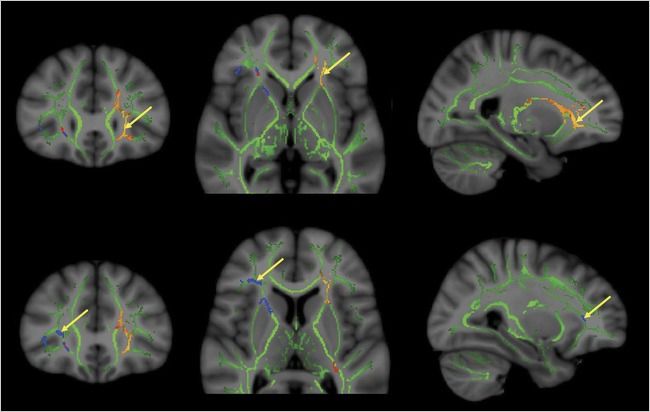
Some western scientists suggest that creativity is mostly ascribed to neurochemistry. High intelligence and skill proficiency have traditionally been associated with fast, efficient firing of neurons. But the research of Dr. Rex Jung, a research professor in the department of neurosurgery at the University of New Mexico, shows that this is not necessarily true. In researching the neurology of the creative process, Jung has found that subjects who tested high in “creativity” had thinner white matter and connecting axons in their brains, which has the effect of slowing nerve traffic. Jung believes that this slowdown in the left frontal cortex, a brain region where emotion and cognition are integrated, may allow us to be more creative, and to connect disparate ideas in novel ways. Jung has found that when it comes to intellectual pursuits, the brain is “an efficient superhighway” that gets you from Point A to Point B quickly. But creativity follows a slower, more meandering path that has lots of little detours, side roads and rabbit trails. Sometimes, it is along those rabbit trails that our most revolutionary ideas emerge.
You just have to be willing to venture off the main highway.
We’ve all had aha! moments—those sudden bursts of insight that solve a vexing problem, solder an important connection, or reinterpret a situation. We know what it is, but often, we’d be hard-pressed to explain where it came from or how it originated. Dr. Kounios, along with Northwestern University psychologist Mark Beeman, has extensively studied the the “Aha! moment.” They presented study participants with simple word puzzles that could be solved either through a quick, methodical analysis or an instant creative insight. Participants are given three words then are asked to come up with one word that could be combined with each of these three to form a familiar term; for example: crab, pine and sauce. (Answer: “apple.”) Or eye, gown and basket. (Answer: ball)

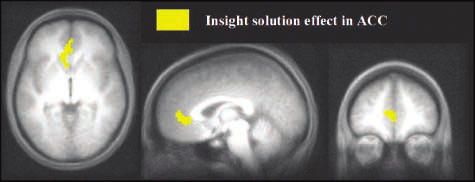
About half the participants arrived at solutions by methodically thinking through possibilities; for the other half, the answer popped into their minds suddenly. During the “Aha! moment,” neuroimaging showed a burst of high-frequency activity in the participants’ right temporal lobe, regardless of whether the answer popped into the subjects’ minds instantly or they solved the problem methodically. But there was a big difference in how each group mentally prepared for the test question. The methodical problem solvers prepared by paying close attention to the screen before the words appeared—their visual cortices were on high alert. By contrast, those who received a sudden Aha! flash of creative insight prepared by automatically shutting down activity in the visual cortex for an instant—the neurological equivalent of closing their eyes to block out distractions so that they could concentrate better. These creative thinkers, Kounios said, were “cutting out other sensory input and boosting the signal-to-noise ratio” to enable themselves retrieve the answer from the subconscious.
Creativity, in the end, is about letting the mind roam freely, giving it permission to ignore conventional solutions and explore uncharted waters. Accomplishing that requires an ability, and willingness, to inhibit habitual responses, take risks. Dr. Kenneth M. Heilman, a neurologist at the University of Florida believes that this capacity to let go may involve a dampening of norepinephrine, a neurotransmitter that triggers the fight-or-flight alarm. Since norepinephrine also plays a role in long-term memory retrieval, its reduction during creative thought may help the brain temporarily suppress what it already knows, which paves the way for new ideas and discovering novel connections. This neurochemical mechanism may explain why creative ideas and Aha! moments often occur when we are at our most peaceful, for example, relaxing or meditating.
The creative mind, by definition, is always open to new possibilities, and often fashions new ideas from seemingly irrelevant information. Psychologists at the University of Toronto and Harvard University believe they have discovered a biological basis for this behavior. They found that the brains of creative people may be more receptive to incoming stimuli from the environment that the brains of others would shut out through the the process of “latent inhibition,” our unconscious capacity to ignore stimuli that experience tells us are irrelevant to our needs. In other words, creative people are more likely to have low levels of latent inhibition. The average person becomes aware of such stimuli, classifies it and forgets about it. But the creative person maintains connections to that extra data that’s constantly streaming in from the environment and uses it.
Sometimes, just one tiny stand of information is all it takes to trigger a life-changing “Aha!” moment.
Ravi Singh is a California-based IT professional with a Masters in Computer Science (MCS) from the University of Illinois. He works on corporate information systems and is pursuing a career in writing.
*****************
ScriptPhD.com covers science and technology in entertainment, media and advertising. Hire our consulting company for creative content development.
Subscribe to free email notifications of new posts on our home page.
]]>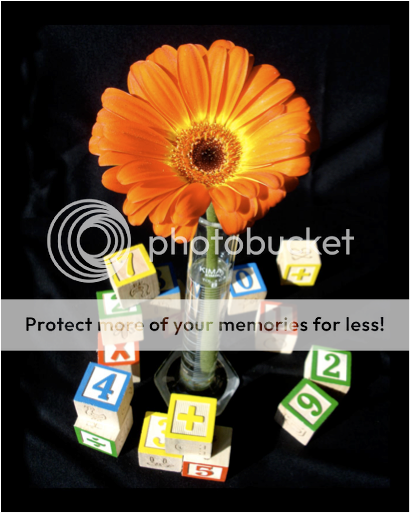
…a nanoscientist’s quest to mimic Nature’s molecular blueprints
Have you ever found yourself entranced by the exquisite beauty and complexity of living things? Like the intricacies of a budding flower, or the mesmerizing patterns on a butterfly’s wing? Have you ever wondered: “what are living things made of?” Are these materials just as beautiful if we were to zoom way way in and look at the actual molecular building blocks that make up life? Take a look at the interactive link The Scale of Things to see just how small the building blocks of life really are! Well the answer is “OMG – totally!” All living things share a ubiquitous set of molecular building materials we call proteins, and they are absolutely stunning! They are not only smashingly beautiful to look at, they are capable of performing a mind-numbing myriad of very intricate and complex functions that are essential to life. In a very special guest post, leading nanoscience Professor Ron Zuckermann of the renowned Lawrence Berkeley National Laboratory recounts his life’s mission as a chemist to try and build artificial microscale sheets made up of nature’s very own building blocks—proteins. Everything you wanted to know about what nanotechnology is, exactly, why engineering proteins is the science of the future, and what we plan to use these discoveries for, under the “continue reading” cut.
I am a Materials Scientist working in a nanoscience research institute called The Molecular Foundry. A fundamental problem in nanoscience is how to make man-made materials with a similar level of precision and complexity at the molecular level found in nature. I am interested in applying lessons from the world of protein structure to practical man-made materials. If we are successful, we should be able to make materials that are cheap and rugged like a piece of plastic, yet be able to perform highly sophisticated functions, like recognizing a molecular partner with high specificity, or even catalyzing chemical transformations. Such materials could be used to make sensors for the detection of harmful chemicals, or as robust medical diagnostics that could survive harsh conditions, say in an underdeveloped nation. In a nutshell, we aim to make artificial proteins. This is an incredibly difficult problem, and one I have been working on for more than 20 years now. Sound a bit ambitious, or maybe a bit crazy? As I will describe in this article, it may actually be quite possible if we break the problem down into bite size chunks. The challenge comes down to two fundamental things: design and synthesis.
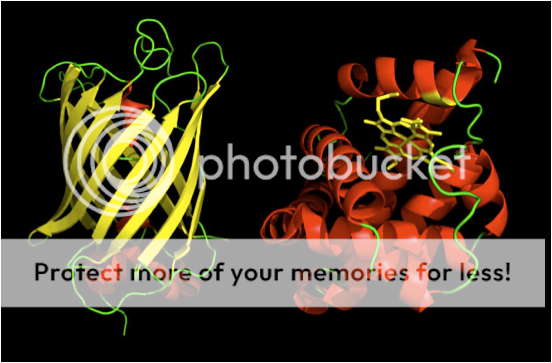
Protein architecture
When I look at the molecular structure of a protein molecule, I see an architectural blueprint that has survived untold generations of evolution and optimization. How then do we break open the hidden rules in these structures and use them to guide us in the design of man-made materials? Over the past several decades, scientists have used the biophysics techniques of X-ray crystallography and nuclear magnetic resonance spectroscopy (NMR) to determine the exact three-dimensional (3D) structure of thousands upon thousands of proteins. What’s cool is that these are all available for anyone to look at (for free!) and study in the Protein Data Bank.
The most fundamental thing to notice is that nearly all protein structures share the following characteristics: (1) they are made of a linear polymer chain that is folded into a precise 3D structure and (2) they are comprised of only 20 simple molecular building blocks called amino acids, arranged in an exact sequence along the polymer chain. When we think of a ‘polymer’ we think of a long chain of repeating chemical building blocks (called monomers) found in materials like nylon or polyethylene. Such man-made materials are incredibly useful and ubiquitous now in our environment (plastic bags or saran wrap, for example). But nature beat us to the punch a long, long time ago. Biopolymers, like proteins and nucleic acids are fundamentally way more sophisticated than man-made polymers. Even though they share the same basic architecture – a linear chain of chemical building blocks – biopolymers contain information encoded in their monomer sequence. This is not unlike the way we store information in a computer. But instead of a long string of 1’s and 0’s, nature uses long polymer chains of either 4 nucleotides (the building block units of RNA and DNA), or 20 amino acids (the building block units of proteins). These 20 chemically distinct amino acid building blocks are arranged in a particular order along the chain that we refer to as the protein’s “sequence.” This sequence is powerful because in many cases it provides all the information or “molecular instructions” necessary for the polymer chain to fold up into a precisely defined 3-dimensional structure. Once folded, the protein is poised and ready for action. The fields of Structural Biology and Protein Folding have revealed the exact way that proteins fold to form local “secondary” structures, called alpha helices and beta sheets, and how these assemble together to create the fully folded protein structure. Think all this sounds a bit too complicate? Try visiting FoldIt, a really fun video game where you can actually learn all about protein folding!
Protein Mimicry
If we ever hope to create man-made protein-like materials, it is safe to assume that we will need a polymer system that shares some of the basic protein-like characteristics: for example, they will need to have a sizable set of chemically diverse monomer building blocks that can be arranged in a particular order along a linear polymer chain of at least 50 monomers long. This is a quite a tall order simply from a chemical synthesis perspective. Moreover, once we are over that hurdle, design tools will be needed to help us figure out which sequences to make.
In the early 1990s, I invented a way to synthesize a new family of non-natural polymers we called “peptoids.” I had just graduated from UC Berkeley with a PhD in organic chemistry and joined a start-up biotechnology company to develop new technologies to accelerate drug discovery. We developed peptoids to be potential therapeutic drugs. The cool thing about peptoids is that the building blocks are very very close in structure to Nature’s amino acids, but different enough to be much more rugged. They can be made from very cheap and simple chemical building blocks, and they can be made in any predetermined sequence you want. We soon developed robotic synthesizers to automatically synthesize these materials for us (see below).
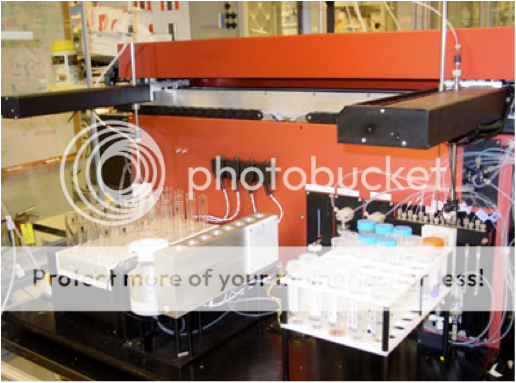
Before long we discovered that short peptoid chains (just 3 monomers long) could have potent biological activities and showed promise as drug candidates. But what really floored me was that the peptoid synthesis chemistry we developed worked so efficiently that we could link over 50 monomers together, one after the other. This means each building block was being attached to a growing chain with an incredible accuracy of over 99.5%! This was exactly the tool we needed to begin the quest for creating artificial proteins. We had discovered the most efficient and practical way to make non-natural polymers of a specific sequence. This was completely awesome!
There was only one problem – the company I worked for had no interest in such a bold quest into basic science. How could such a pursuit lead to a moneymaking product in a few months? In 2006 I moved to Lawrence Berkeley National Laboratory where I set out in earnest to search for artificial proteins. Fortunately, tackling difficult problems in basic science is much more the norm here. And more good news – my previous employer was kind enough to donate my robots to me. Armed with this technology to synthesize peptoid polymers, we turned to the next daunting task: which sequence of monomers should we make? It turns out that there are an absolutely astronomical number of possible peptoid sequences that can be made. Consider that there are several hundred building blocks to choose from at each of the 50 positions of a polymer chain. This means there are over 100 to the 50th power potential sequences to choose from. This is more than the number of atoms in the universe! What was a chemist to do?
Like Oil and Water
To help us focus our sequence design, we once again turned to nature. A long-time collaborator and friend of mine, Professor Ken Dill of UC San Francisco has studied protein structure in detail for decades, and has distilled some fundamental rules that are universal to all protein structures. He notes that protein structures are like globes with a water-loving surface and a water-hating (or oil-like) interior. The bottom line is you can basically lump each amino acid in the protein’s sequence into one of two categories: oil-like or water-like. This simple classification can tell you whether an amino acid is located on the inside or the outside of the protein.
The amazing thing about this insight is that it’s like looking at a protein wearing X-ray glasses! Instead of seeing 20 different “colors” of amino acids, we see only two: black and white. We are back to a simple binary code—like 1’s and 0’s. This makes it much easier to see the secret patterns hidden within the sequence. In fact, many researches have convincingly demonstrated that these binary patterns are simple, plentiful and predictable.
So with our handy X-ray glasses on we returned our gaze to the peptoid structure problem. We realized that all our sequence recipe needed was a touch of Dill! This meant we could greatly simplify our search for the right peptoid sequence. We needed to only consider two, diametrically opposed building blocks: water loving and water hating.
Nanosheets
Inspired by these insights, we set out to find the right sequence patterns that would result in a precisely ordered structure in a non-natural peptoid polymer. We began to systematically unlock the sequence code by using our robots to synthesize all the possible repeating patterns of these two disparate building blocks. We reasoned that if we were to make something precisely ordered, it would “crystallize” into something that we could see. Fortunately we have really powerful electron microscopes in my building. So we started cranking through all the possible sequence patterns, dissolving up each new sequence in some water and taking it down to the basement to look at them really close up.
Now it is a little nuts to think that we could make something precisely structured from a peptoid polymer, since it is known that each strand is about as stiff as a piece of overcooked spaghetti. And as one might expect, most of our sequences looked really messy and gooey. But very soon we saw something quite striking. In one particular sample, we saw large, flat paper-like objects with sharp, straight edges. And they were floating around everywhere in the solution. An unexpected sight to be sure!
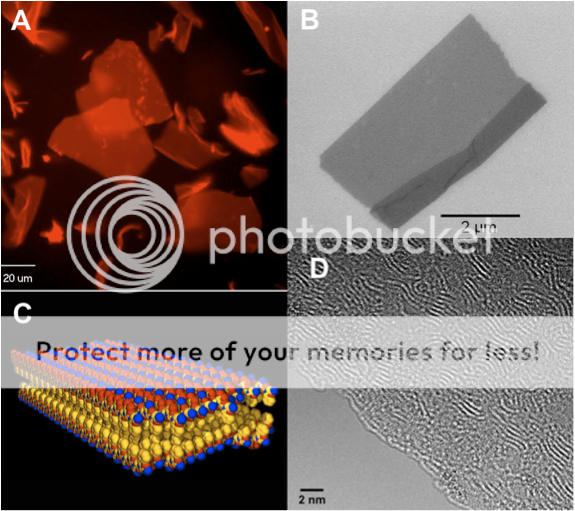
Fast-forward another year of making careful measurements and reproducing the results over and over. We determined that these sheets were only two molecules thick, and yet millions and millions of molecules wide. We had discovered the largest and thinnest organic crystals ever! We were able to use one of the most powerful electron microscopes in the world in the National Center of Electron Microscopy, to look directly at the individual polymer chains that make up the crystal. We could see these chains wiggle around and slide against one another as if they were alive. No one had ever seen such detail before – a truly awe-inspiring sight!
We were able to use many kinds of advanced analytical tools to tell us that these nanosheets were indeed very special. They have the same kind of ordered structure that a protein has: they have a defined inside and outside, and we know almost exactly where each atom is located in the structure. Essentially, we discovered the sequence code that programs the polymer chain to form a 2D sheet. No doubt there are more complex codes waiting to be discovered that will form even more sophisticated structures. This discovery was recently reported in the journal Nature Materials, and was picked up by the more mainstream publications WIRED.com and Chemical & Engineering News. These sheets are likely to be important for all kinds of potential applications. Their discovery is kind of like the invention of ‘molecular plywood’: a new kind of nanoscale building material from which we can engineer even more complex molecular architectures. It’s amazing what kind of beauty you can create from simple building blocks!
Basic research like this can move seemingly very slowly, which makes the occasional breakthrough like this all the more meaningful and exciting. It reaffirms for me that it is so important to listen to and cultivate your inner curiosity, surround yourself with like-minded people, and aim high. With enough patience and persistence, wonderful things await discovery!
Take a look at a brief video of Dr. Zuckermann explaining his lab’s nanosheet discovery:
Ron Zuckermann is the Facility Director of the Biological Nanostructures Facility at Lawrence Berkeley Laboratory. Dr. Zuckerman also provides numerous consulting services at the intersection of chemistry, biology and engineering.
*****************
ScriptPhD.com covers science and technology in entertainment, media and advertising. Hire our consulting company for creative content development.
Subscribe to free email notifications of new posts on our home page.
]]>
Here at ScriptPhD.com, we pride ourselves on being different, and we like thinking outside the mold. So for Earth Day 2010, we wanted to give you an article and a perspective that you wouldn’t get anywhere else. There is no doubt that we were all bombarded today with messages to be greener, to use less, to be more eco-conscious, and to respect our Earth. But what is the underlying effect of advertising that collectively promotes The Green Brand? And has the Green Brand started to overshadow the very evil—environmental devastation—it was meant to fight to begin with? What impact does this have on the future of the Green movement and the advertising agencies and media that are its vocal advocates? These are questions we are interested in answering. So when we recently met Matthew Phillips, a Los Angeles-based writer, social media and branding expert, and the founder of a new urban microliving movement called Threshing, we were delighted to give him center stage for Earth Day to offer his insights. What results is an intelligent, esoteric and thoughtful article entitled “Plastic Beads and Sugar Water,” sure to make you re-evaluate everything you thought you knew about going green. We welcome you to contribute to (and continue) the lively conversation in the comments section.
“Access to land provides access to food, clothing, and shelter—which means access to land provides the possibility of self-sufficiency—if anyone wants to maintain a dependent (and therefore somewhat dependable) workforce, it’s crucial for you to sever their access to land. It’s also crucial that you destroy wild foodstocks: why would I buy salmon from the grocery store if I could catch my dinner from the river? Now, with people having been effectively denied access to free food, clothing, and shelter, which means having been effectively denied access to self-sufficiency, if they are going to eat, they’re gong to have to buy their food, which means they’re going to have to go to work to get the cash to buy what they need to survive. If you’re a corporation, you’ve got them where you want them.” —What We Leave Behind.

I have a great deal of admiration for our original permaculture engineers, the American Indians, all grass fed bison advocates. Looking back, we can’t imagine how naive or gullible they were to accept fire, water, plastic beads and useless trinkets in exchange for their healthy animals, fresh fruits and vegetables, consulting knowledge, and land—whose value is incalculable. Interestingly, here we are 518 years later, and we’ve all been duped into giving up our valuables for well marketed sugar water, and filtered tap… in plastic bottles.
After 1492 the American colonization effort was dominated by the European nations. In the 19th century alone, 50 million people left Europe for the Americas with ‘old world’ diseases, and a manifesto to massacre, obliterating 42 million American Indians. Everything changed; the landscape, population, plant and animal life. A few pioneers with rebel attitudes proved they could kill, conquer, and dominate an entire people and their land. What have we learned? When you deprive a group of people access to their land, you dominate and control their self-sufficiency, and ultimately their sustainability.
Earth Day was designed from its inception, April 22, 1970, to inspire awareness and appreciation for the Earth’s environment. Like all successful grassroots movements, Earth Day continues to self-organize and experiences annual growth. Over the years, it has propagated thousands of related causes or brands. This celebration gives us the opportunity to contemplate how to purchase food and drink that are produced locally through natural, sustainable methods. Whether we graze together, or barbecue grass-fed bison, I anticipate that many foodborne conversations will thresh organic ideas that seed new urban backyard businesses, and energize sustainable causes.

In fact, in this past year, we have witnessed local production and sustainable social causes grab the wheel from the generic “Green” brand. ‘Local and sustainable’ terms have the potential to drive significant impact in helping redefine a movement whose banding terminology is arguably out-of-focus. The Green goal has not achieved our Garden of Eden fantasy. Many generic Green causes have become distracted watching, and often joining, the fight against their ‘evil,’ instead of cultivating community and encouraging positive purposeful action. We’ve seen new Green causes sprout through PR dusting designed to crowd out similar already established causes. There’s nothing wrong with competition, seeking a bigger audience, news, press, and ultimately funding, but often the next new Green cause articulates greater Green evils in an attempt to further establish its reason to rally. This problem is churned up further with traditional reports broadcasting emotionally charged sound bites. Reporters often don’t take the effort to dig past the easy emotional approach, and into the rich cream of the cause itself. It is much easier to philosophize about the negative, which can feed our illusion of intellectual superiority, but it’s really keeping our callus-free hands from getting dirty planting GM-free maze in the garden and producing oxygen. “The creation of something new is not accomplished by the intellect but by the play instinct acting from inner necessity. The creative mind plays with the objects it loves,” said Carl Jung.
A great brand seeks to unify in a cyclical system: Magnetizing believers, educating, generating action, and finally producing evangelists, who then magnetize new believers and so on. Memorable brands are most effective when they are communicating their power and concept through story. At its most basic, a brand’s story is made up of the hero, (relating to the brand’s reputation and hopefully positive recognition), and its evil, (the perception of what hinders recognition of the brand). Clarifying the adversaries of the brand can help to ‘rally the troops,’ codifying their cause and movement. Without an adversary, it’s often difficult to get enough of a rouse from fellow partners to get anything started.

Every great brand needs an evil to fight, but Green’s evil has metastasized into the most unimaginable catastrophe that no cause could ever compete against—an over heating planet. Since it doesn’t get much worse than a gooey globe due to our ongoing abuse, this heat enemy seemed guaranteed to become THE unifying force, an evil that we could all fight together to overcome. The problem is the scope is too large to control or confine. It has mutated. Proving global warming has the potential to fracture the green community, and along the way has produced a number of serious critics. Terms like ‘climategate,’ and climate skeptics like Doug Keenan, continue to look at research they say is embellished to promote climate change. Maybe worshiping the over heating demon has made the ‘Green’ brand seem boring compared to the excitement of the fight. Google never defined its “Don’t be Evil,” last minute tag, which is part of the reason it continues to generate conversations across the board. Google has essentially allowed all of us to insert our own definitions of evil, which in effect has unified greater numbers to their brand. A very novel approach.
If the evil of a brand consistently gains more press than the cause, then the evil assumes and replicates the identity of the brand. When this happens, the brand is no longer the host. When the evil forcefully sucks all the nourishment from the brand’s beating heart, then the evil we were fighting becomes the cause. We feel more comfortable with our fingers on the keyboard dealing intellectually with evil, which in effect, removes our foot from the shovel of physical, sweaty action. Do we want to get back to the heart of the brand, the original cause? Harley Davidson, once perceived as the brand of choice for rebels and tattooed ex-cons, re-branded itself and become the hog of choice for everyone who could scrape together enough money, regardless of prison experience, body type, tattoo placement, or gender. Even our kids wear official HD branded fashion with pride.
If we stop promoting the evils, real or manufactured, and start encouraging positive actions and solutions, (often positive action is the best offense against perceived evil anyway) we’ll find passionate people that want to join us in healing our people and planet. The strategic approach to refresh a brand is extremely important if it is to succeed. Digitally empowered consumers want to punish those that don’t behave in a socially responsible way and reward those that do. Social media has given people real power to act, and also to be negative. “Social media is inherently more negative than a positive medium on many levels,” said David Jones, the global chief executive of Havas Worldwide. “Lots of stuff that is passed around is negative. If you are a brand or a company today you should be far less worried about broadcast regulations than digitally empowered consumers.”
Many will continue to base their directive on creating new enemies, using ‘the fight’ to impassion those around them to rally their cause. Stop depleting the ozone layer, reduce your carbon footprint, global warming. All grand Green, but terminology that is technically fear-focused. We’ve heard the pitch: “It is your investment of $59.95 that allows us to partner together to fight this injustice.” The fear based, negative approach is almost always wrong, (unfortunately, it can be effective) . It’s a slippery slope, and those who don’t fully embrace the creed, are either stamped ‘stupid,’ or ostracized. But sustainability should be positive at its core. There is a time to debate, and we’ve debated ourselves into the greatest recession any of us have ever experienced. It’s time to stop debating.

Let’s begin by forming communities that build sustainable ventures together. If we are fighting, or politicking, we are not building. “We have become divided into so-called red and blue states, an outcome directly traceable to the urban-rural division of our society. This is something of a simplification, but food producers and their social allies tend to vote red and food consumers and their social allies tend to vote blue. The division is thought to be between conservative and liberal philosophies, but it much more reflects the difference between rural and urban values,” said Gene Logsdon.
There are two real challenges within the sustainability movement:
1) Consumers’ decisions (especially with food) are splintered by: A) Convenience, B) Tradition, C) Bias, and D) Beliefs.
2) Industry’s “manufactured demand” is affecting consumers with: A) Deceptive advertising, B) Ambiguous terminology, C) Perfectly designed plastic convenience packaging sealing our addictive lifestyles.
The minute we wake up we are subjected to an eco-plastic, part of this complete breakfast, 100% edible, industrialized high fructose corn syrup, brand campaign. Industrialized conveyor belts are pumping out a marketing product of starch coated with refined sugar. We can reignite our camaraderie by producing fruits, vegetables, animals and vehicles that not only compete, but surpass, our current available choices; all sponsored of course by our very green desire for sustainability. Incidentally, the average number of ‘green’ products per store almost doubled between 2007 and 2008. Green advertising almost tripled between 2006 and 2008. Does this necessarily mean we are heading in the right direction?
Governmental regulations for consumer protection in industrial food processing plants have only added to an already over stressed food system. This industrialized hyper-efficiency has caused diseases in animals and bugs on crops that have been taken so far out of their natural ecosystem that they can no longer produce without heavy use of antibiotics and pesticides. These measures, of course, were designed to keep us safe, but instead have become another major concern since “packaged nourishment” comes from the industrialized, often treated, food system.

Creatives are beginning to find and tell the stories concerning the overly subsidized and industrialized food and distribution system which favors use of pesticides and antibiotics. Since the government historically is not very good at spearheading movements, artists (media pioneers, authors) and social entrepreneurs will continue to fill this leadership role. We don’t have to look far to see powerful results. Thank the documentary filmmakers of Food Inc., Supersize Me, HomeGrown, The Future of Food, Story of Stuff, and Bottled Water, for helping us become visually aware of how industries have been deceiving consumers and themselves in their interest of greed and everyone’s desire for convenience. But there is hope, and it’s simple. Consumers are communicating online like never before, this leads to uniting together to strategically direct where we spend our hard earned bread and where we plant or raise our own food.
Jamie Oliver’s new TV series, The Food Revolution, has exposed the frozen fat underbelly of pre-packaged (brown and gold) foods, and government charts that officially dictate the clogging of our kids in school. Local and “real” food production and consumption has become a legitimate genre, with universities, and high schools requiring reading of titles like Barbara Kingsolver’s Animal, Vegetable, Miracle, Michael Pollan’s Omnivore’s Dilemma, Bill McKibben’s Deep Economy, among others. These authors are helping us move past intellectual reasoning and into action. Since Timothy Ferrass taught us how to achieve a four hour work week, some of us among the fortunate now have the extra time to plant some seeds, water, and grow great big vegetables, and share them with our friends and neighbors.
I believe that in the next decade we will see less of an emphasis on extrinsic, materialistic values and more on intrinsic, spiritual values. This shift in emphasis will begin to bear fruit with the collaborative grafting between creative media pioneers and social entrepreneurs who seek to disrupt the status-quo. Research from San Francisco State University has shown that experiences bring people more happiness than material possessions. Experiences shared with others continue to provide even greater happiness through memories long after the event occurred. I believe many social entrepreneurs and creative media pioneers, in their hearts, believe their core purpose is to encourage our return to a sustainable world ecosystem. In other words, many will forgo Hummer-sized riches in order to nurture the successful adoption of their creations into society. There remains however ambiguity in the complexity that lies between the producer and the consumer. The ancient system of distribution gives middlemen the leverage to manipulate both producers and consumers. This too is evolving, as producers return to their roots and begin to distribute locally. There is change in the air, spring is coming.
We are at such a nascent stage in the evolution of the sustainable movement. The infrastructure necessary for the modern city to relocate to the farm is exorbitant, but the farm is beginning to integrate into the metropolis, one yard at a time. ‘Off the grid’ produces many wonderful connotations. It is an adventurous subject, one that I’m convinced will help propel this branding conversation forward. I wonder who else is discussing the connections of the ideas from this article, and from the authors and media pioneers mentioned? Who are the artisans, and social entrepreneurs that are working on this? Very curious about your thoughts. Please don’t hesitate to email me, and please act.
Let’s continue to find new ways to unify this brand with wonderful heart felt stories about the adventures of locally produced products, urban farms, and sustainability.
Writing this has given me a renewed appreciation for early American Indian cave drawn stories of food: adventure, and victory. There is more there than I had imagined.
Matthew Phillips is a media producer, writer and technologist working in Los Angeles, CA. He is the producer of Threshing.
*****************
ScriptPhD.com covers science and technology in entertainment, media and advertising. Hire our consulting company for creative content development.
Follow us on Twitter and our Facebook fan page. Subscribe to free email notifications of new posts on our home page.
]]>
poster ©2010 Home Box Office, all rights reserved
This was a remarkable week for autism science and publicity. In a stunning and rare reversal, medical journal The Lancet retracted the 1998 paper responsible for suggesting a link between autism and MMR vaccinations, incurring over a decade of acrimonious debate and frightened parents. Ironic then that this should be the week when HBO premieres their new feature film Temple Grandin, about the eponymous world-famous scientist. Dr. Grandin has written and spoken openly about her struggle with autism and how it’s colored her view of the world and influenced the science she studies. ScriptPhD.com is extraordinarily honored to extend a warm welcome to friend and fellow blogger Susan Etlinger, author of the autism spectrum blog The Family Room, to review the biopic and interview the project’s executive producer. For full content, please click “continue reading.”
I cringe a little every time a new movie about someone with autism is released. It’s such a complicated and contentious topic, even more so because autism is a spectrum condition which can manifest in a dizzying number of ways. Like snowflakes, no two people with autism are alike.
Consider that Dustin Hoffman’s Rain Man—the obsessive, lovable card-counting savant—still remains many people’s icon of autism. Now consider that Kim Peek, the man who inspired the Rain Man character, was misdiagnosed as a child and wasn’t actually autistic at all.
And while films about autistic people usually focus on the experience of the people around them, it is a much more courageous task to convey the point of view of the autistic person himself or herself.
All of this makes the subject of Temple Grandin—author, internationally-known animal scientist, inventor and autism advocate—even more daunting. Her groundbreaking memoirs, including Emergence: Labeled Autistic and Thinking in Pictures, are generally agreed to have revolutionized our understanding of autism and the capabilities of people on the spectrum. So I approached HBO’s biopic, Temple Grandin, starring Claire Danes in the eponymous role, with a mixture of anticipation and dread.

The choices made by producer Emily Gerson Saines, director Mick Jackson and Danes herself are impeccable. Gerson Saines, herself the mother of a boy on the spectrum and a cofounder of the Autism Coalition for Research and Educaion (ACRE), which is now part of Autism Speaks, says that she had the script vetted by multiple people, Dr. Grandin included, to weed out even the remotest speck of inauthenticity. “There were a lot of eyes watching this script to make sure it was honest,” she told me in an interview for ScriptPhD.com earlier this week. “I was not going to mess it up.”
Diagnosed as a child with autism and “infantile schizophrenia,” (a label that has since been discredited), Temple Grandin was raised by her mother Eustacia (Julia Ormond), who refused to institutionalize Temple despite the doctor’s urging and the conventional wisdom of the time.
Rather, Eustacia chose to home-school Temple, sending her to her aunt’s farm for breaks, and enrolled her in a boarding school where Temple met Dr. Carlock (David Strathairn), a science teacher who was the first to appreciate the unique qualities of Temple’s mind; namely, her ability to think visually (in pictures) rather than narratively (in words). This opened up a whole world for Temple, giving her confidence and ultimately enabling her to channel her empathy for animals into a career that would change the cattle industry and lead to her future as a speaker, author and advocate for people with autism.
But while there was pressure to be true to Grandin’s very particular story, there was also the question of whether parents of more severely-affected children would feel that Grandin’s many accomplishments would set unrealistic expectations. “If you see a film about Michael Jordan,” asks Gerson Saines, “does that mean you then expect your son to become an NBA legend? The film is a point of departure—it opens up the discussion.”
The film’s specificity—its refusal to generalize, sentimentalize or glamorize—makes it work. And what seems like a modest ambition, to tell the story of one very particular woman on one very particular place on the spectrum, turns out to be not only a thoughtful choice but a creatively rich one.
But what ultimately elevates Temple Grandin beyond the typical biopic into artistry is Danes’ fearless performance and the filmmakers’ commitment to communicating Grandin’s inner life. It’s evident from the first frame, as she steps off a plane on the way to her aunt’s farm. The engines are so loud, the air so heavy, that you are immediately drawn into her world. That choice—to show the world from Temple’s point of view, with wit and with precision—is a gift to anyone who knows or loves a person with autism.
Ultimately, says Gerson Saines, the most important goal for her in making this film was for parents of children with autism to experience the renewed sense of hope and inspiration she felt when she encountered Temple Grandin’s work for the very first time, and to remember that with perseverance almost anything is possible.
“Because,” she says, “I’m one of those parents out there—and I need to be inspired.”
Temple Grandin, starring Claire Danes, Julia Ormond, Catherine O’Hara and David Strathairn, will premiere on HBO on Saturday, February 6 at 8:00 p.m.
Trailer:
Susan Etlinger is the mother of a six-year-old son diagnosed on the autism spectrum and the author of the Family Room blog.
*****************
ScriptPhD.com covers science and technology in entertainment, media and advertising. Hire our consulting company for creative content development.
Follow us on Twitter and our Facebook fan page. Subscribe to free email notifications of new posts on our home page.
]]>